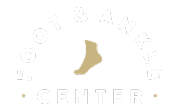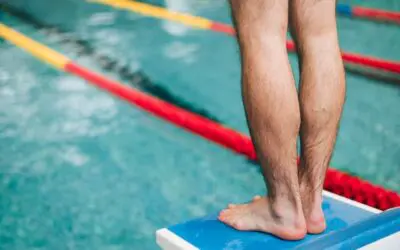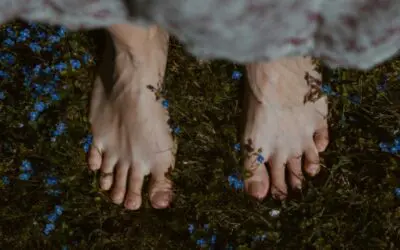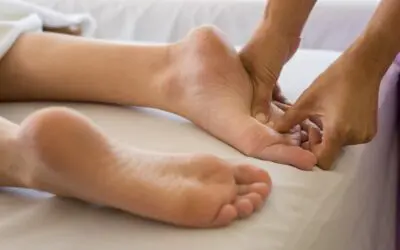Feet. They’re often overlooked, misunderstood, and even neglected. But really, your feet are the behind-the-scenes MVPs of your daily mobility. Without the care they deserve, feet begin to protest, which can be extremely painful and require a trip to the foot and ankle clinic.
When you walk, your feet roll inward and outward, which are normal foot mechanics that help with balance and stability. But if they roll too far inward or outward, you might start to have some big problems.
Pronation—inward roll—and supination—outward roll—are natural foot movements that keep you walking, running, and standing tall. But is one of them just way overdoing it?
Better foot health leads to better overall health, so we’re here to help you determine how your feet roll. Do they feel misunderstood? Let’s listen to their side of the story.
Pronation: The Inward Roll
Pronation refers to how your foot rolls inwards slightly when it touches the ground. This lets it absorb much of the shock of the ground and adapt to the surface.
However, overpronation happens when the foot consistently rolls too far inwards, which is detrimental since it can lead to foot pain, instability, or injury. If left untreated, overpronators can even require bunion or plantar fasciitis treatment.
If you have flat feet or low arches, you may be at risk of overpronation. People who frequently wear unsupportive shoes are also more likely to overpronate.
Are you wondering if you overpronate? Check your shoes. If the inner part is worn significantly more than the outer part, you may. Arch pain and discomfort during prolonged periods of standing are also signs.
You can even spot overpronation yourself. Just grab a mirror and look at your foot alignment as you squat.
Supination: The Outward Tilt
Supination is the opposite of pronation, where the foot rolls outward. When the foot rolls outward, it doesn’t absorb as much shock. This movement can cause some strain on the outer foot and ankle area.
Oversupination is less common than overpronation but can happen in people with high arches, weak foot muscles, or tight or otherwise improper footwear. It’s linked to risks like sprains and knee pain in athletes.
If you notice ankle instability, outer foot pain, or calluses on the little toe side of your foot, you might walk with overpronated feet.
If you want to check it out at home, you can do a DIY wet footprint test on a piece of cardboard or concrete. If there’s not much of a print between your heel and ball, you may have a high arch, which can make you more likely to supinate.
Why Pronation and Supination Impact Your Entire Body
Foot imbalances create a ripple effect of issues throughout your whole body. Uneven foot mechanics can strain your knees, hips, and spine—crazy, right? You may even feel lower back pain or joint discomfort because of a foot-related issue.
When all is well, proper foot alignment absorbs the shock from the ground and protects the whole body during movement—your feet are your foundation.
Ask yourself: Which part of my body hurts most after walking? Is it your feet? Your knees? Your back? That could be your clue to decoding the mystery of how you move.
What You Can Do to Restore Balance
Whether your podiatry problem is overpronation or oversupination, we’ve got your back.
For overpronated feet, try these common flat feet treatments:
- Wear structured shoes that are designed for stability,
- Use orthotics to support your arches, or
- Practice calf and foot stretches like toe yoga or heel raises.
And if you struggle with oversupination:
- Opt for cushioned, flexible footwear with arch support,
- Strengthen your foot muscles with balance exercises like single-leg stands, or
- Focus on loosening tight calf and shin muscles.
Footwear Matters: Choosing the Right Support
Well-fitting shoes are your ticket to the land of happy feet. They’re essential for maintaining overall foot health and comfort.
Choose shoes with sufficient and proper arch support, cushioned soles, and plenty of flexibility to let your feet stretch and bend. Trendy shoes are fun and fashionable but often unsupportive and can exacerbate problems. Shoes specialized for running or walking can reduce strain and make you feel like you’re walking on air.
Try to find the right fit when you’re picking out your next set of everyday shoes. Consider shopping in the evening when your feet are slightly swollen to get a better idea of how they’d support you when your feet are tired.
Put Your Best Foot Forward
Your feet are the base of everything you do, and understanding how pronation and supination affect your movement is key to maintaining foot health and your overall well-being.
Whether you have foot discomfort or just want to take better care of your feet, recognizing the signs of misalignment in your walking can help you make informed decisions.
If you’re experiencing persistent foot or ankle pain or notice uneven shoe wear, it may be time to see a foot doctor in St. George, Utah. A podiatrist can expertly evaluate your gait and foot structure and tailor a treatment plan to get you walking your best soon.
Remember, your feet are key to having a great day, so treat them like royalty. Taking care of your feet today can help you stay active, comfortable, and injury-free for years to come.



